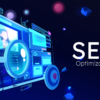Artificial intelligence (AI) has become a transformational force in many sectors as a result of technology’s rapid evolution. Web development, the art and science of creating and maintaining websites, is no exception. As AI continues to advance, web developers are incorporating intelligent systems and algorithms into their workflows to enhance functionality, user experience, and overall efficiency. In this comprehensive guide, we at Nexaplaystudios explore how web development is adapting to the age of AI, and the impact this integration has on the digital landscape.
1. AI-Powered User Experiences
a. Personalized Content Recommendations
AI algorithms analyze user behavior, preferences, and interactions to deliver personalized content recommendations. In web development, this translates to dynamic and personalized user experiences. For instance, e-commerce websites can use AI to recommend products based on a user’s past purchases, search history, and even demographic information. This level of personalization not only enhances user engagement but also contributes to higher conversion rates.
b. Chatbots for Real-Time Interaction
Web developers are increasingly integrating chatbots powered by natural language processing (NLP) to provide real-time interaction with users. Whether it’s answering customer queries, assisting with product searches, or guiding users through a website, AI-driven chatbots offer a seamless and responsive experience. This increases customer pleasure while freeing up staff members for more difficult jobs.
2. AI-Enhanced Search and SEO
a. Predictive Search Suggestions
AI is revolutionizing search functionalities on websites by offering predictive search suggestions. As users type in the search bar, AI algorithms analyze the input and provide real-time suggestions, making the search process faster and more intuitive. This feature, often referred to as “autocomplete,” not only improves user experience but also contributes to higher search rankings.
b. AI-Driven SEO Strategies
Web developers are leveraging AI tools to enhance search engine optimization (SEO) strategies. AI algorithms analyze search engine algorithms and user behavior to identify patterns and trends. This information is then used to optimize website content, structure, and keywords, ensuring better visibility on search engine results pages (SERPs). The use of AI in SEO reflects a shift toward data-driven decision-making in web development.
3. Intelligent Automation in Web Development
a. Automated Code Generation
AI is making waves in web development by automating certain aspects of the coding process. Tools powered by machine learning can analyze code patterns, understand project requirements, and generate code snippets. While not replacing human developers, these AI-assisted tools speed up the development process, reduce errors, and enhance overall efficiency.
b. Smart Testing and Debugging
AI-driven testing tools are becoming essential in web development. These tools can analyze code for vulnerabilities, identify potential bugs, and even suggest improvements. By automating the testing and debugging processes, web developers can ensure the reliability and security of their applications without spending excessive time on manual testing.
Also Read: Top 10 Web Development Challenges And How To Overcome Them
4. AI-Infused Design Principles
a. Responsive and Adaptive Design
AI plays a crucial role in creating responsive and adaptive web designs. Machine learning algorithms analyze user behavior across different devices and screen sizes to optimize the layout and presentation of content. This ensures a consistent and user-friendly experience across various platforms, from desktops to smartphones.
b. Generative Design
Generative design, powered by AI, is transforming the way web developers approach the design process. AI algorithms can generate multiple design variations based on specified criteria and user preferences. This not only accelerates the design phase but also allows for a more iterative and exploratory approach, leading to innovative and user-centric designs.
5. Enhanced Security Measures
a. Behavioral Biometrics for Authentication
AI is reinforcing security measures on websites through the implementation of behavioral biometrics. Machine learning algorithms can analyze user behavior patterns, such as typing speed and mouse movements, to establish a unique biometric profile for each user. In addition to the conventional username and password authentication, this offers an extra degree of protection.
b. AI-Powered Threat Detection
Web developers are incorporating AI-driven threat detection systems to identify and respond to security threats in real time. These systems use machine learning algorithms to analyze patterns of malicious behavior and detect anomalies that may indicate a security breach. By proactively identifying and addressing potential threats, web developers can enhance the overall security of websites and applications.
6. Natural Language Processing (NLP) Integration
a. Conversational Interfaces
The integration of natural language processing (NLP) in web development has given rise to conversational interfaces. Voice-activated assistants and chatbots that can understand and respond to natural language queries are becoming commonplace. This trend is reshaping user interactions, providing a more intuitive and human-like experience for website visitors.
b. Content Summarization and Analysis
NLP algorithms are also being employed for content summarization and analysis. Web developers can use AI to automatically generate concise summaries of lengthy articles or analyze user-generated content for sentiment and key themes. This not only streamlines content creation but also provides valuable insights into user preferences and opinions.
7. AI-Driven E-Commerce Enhancements
a. Dynamic Pricing Strategies
E-commerce platforms are harnessing the power of AI for dynamic pricing strategies. Machine learning algorithms analyze market trends, competitor pricing, and user behavior to adjust prices in real-time. This dynamic pricing approach allows businesses to optimize revenue and respond quickly to changes in market conditions.
b. Predictive Inventory Management
AI is transforming inventory management in e-commerce by predicting demand patterns and optimizing stock levels. Machine learning algorithms analyze historical sales data, market trends, and external factors to forecast demand accurately. This ensures that businesses can maintain optimal inventory levels, minimizing both stockouts and overstock situations.
Conclusion
As we navigate the age of AI, web development is undergoing a profound transformation. The integration of artificial intelligence is not just a technological trend; it’s a paradigm shift that is redefining how websites are created, optimized, and experienced. From personalized user interfaces to automated coding processes, AI is at the forefront of driving innovation and efficiency in the web development landscape.
Looking ahead, the collaboration between human creativity and AI capabilities is poised to unlock new possibilities. Web Developers who embrace the potential of AI technologies will be better equipped to navigate the dynamic challenges of the digital era. The future of web development is not just about writing code; it’s about orchestrating intelligent systems that enhance user experiences, improve security, and redefine the boundaries of what is possible on the web. As AI continues to evolve, so too will the art and science of web development, creating a digital landscape that is both innovative and user-centric.


